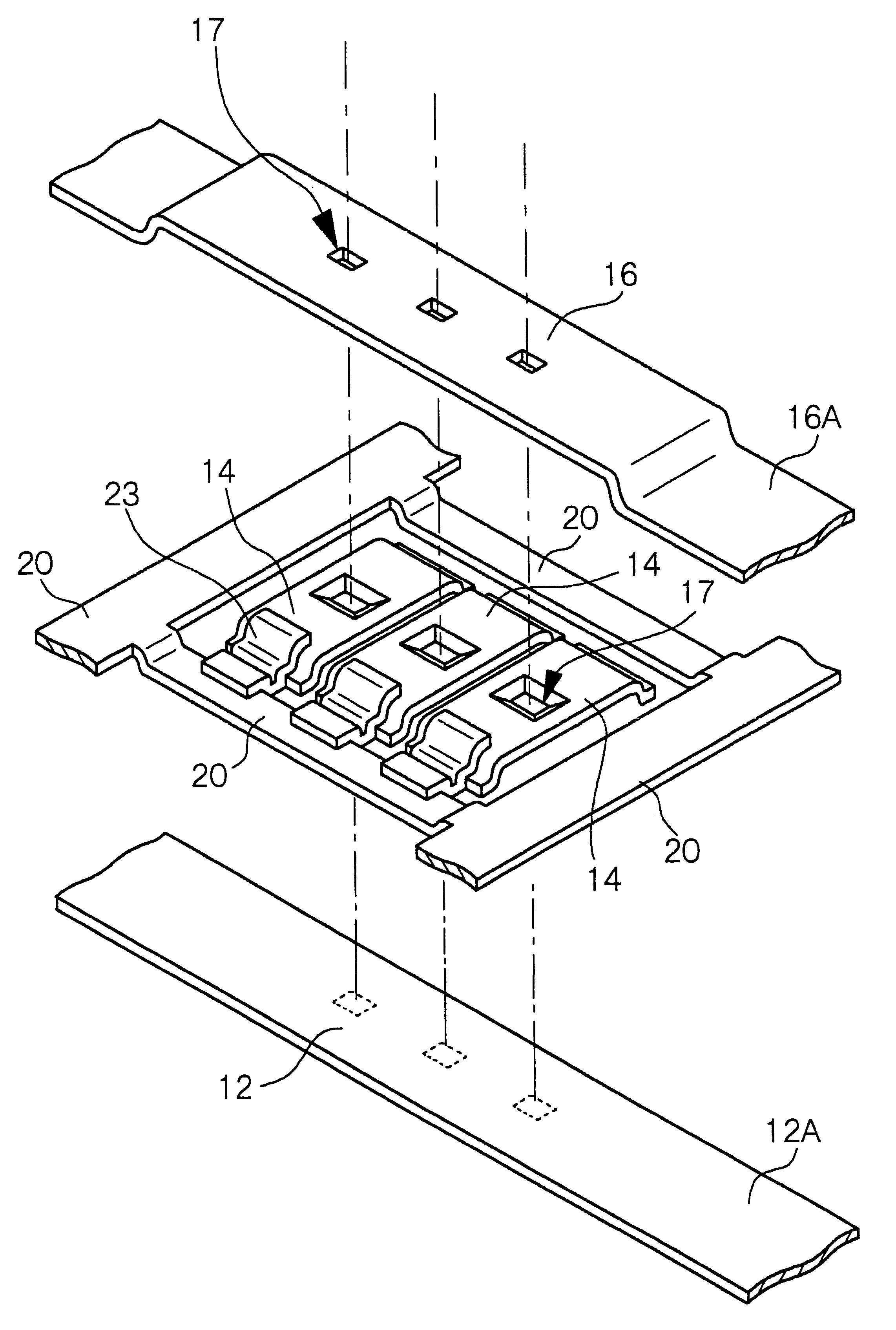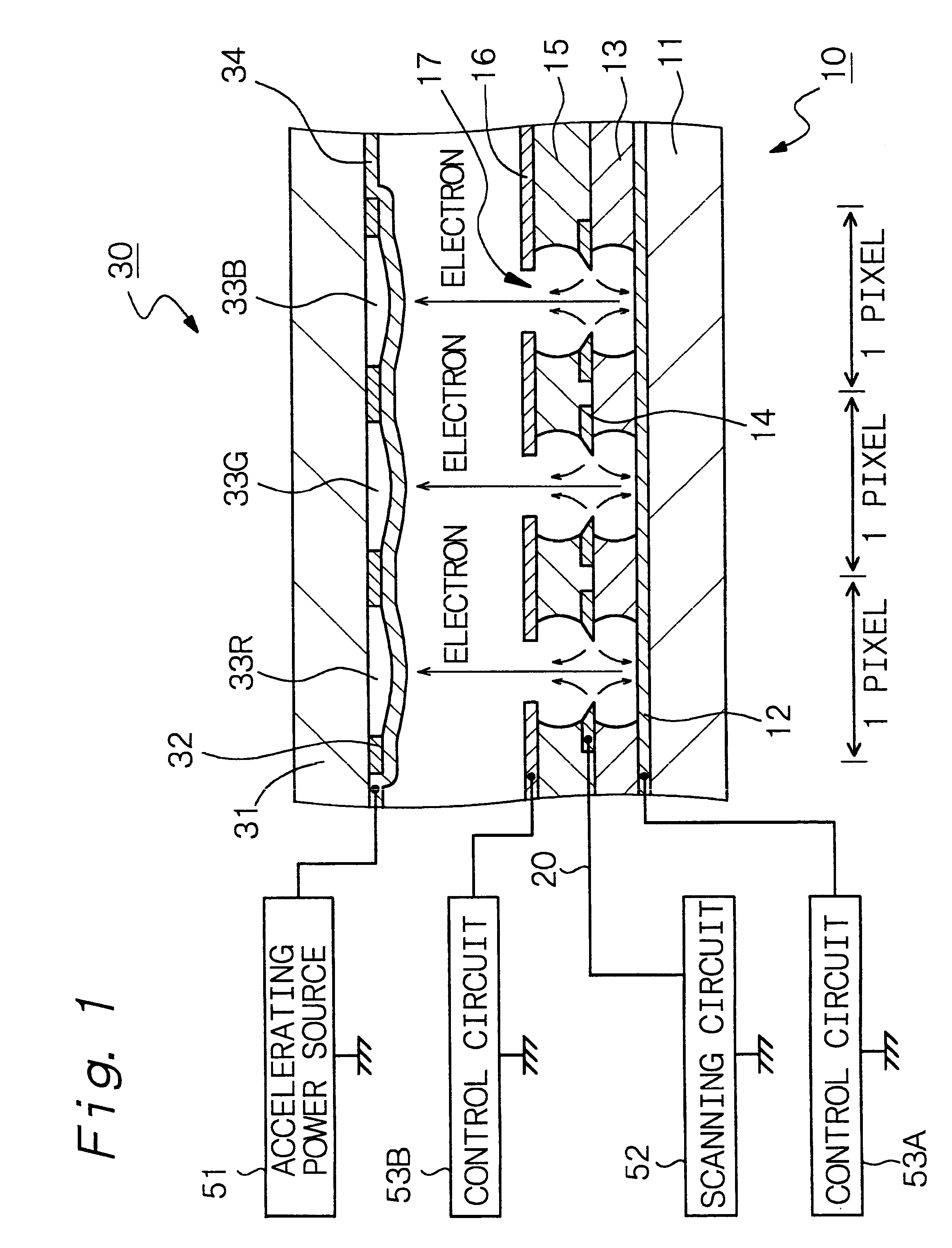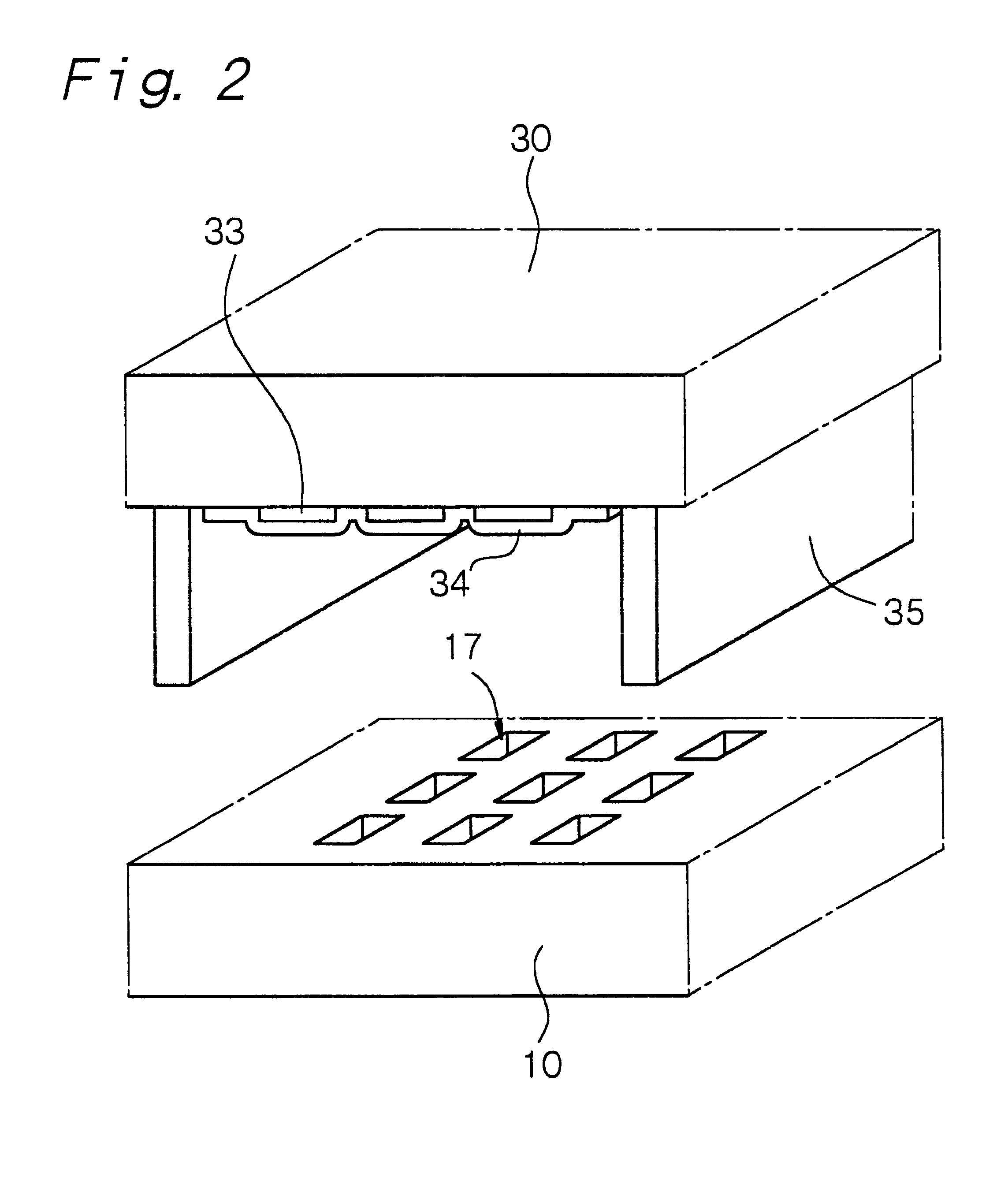Cold cathode field emission device and cold cathode field emission display
a cold cathode field and emission display technology, applied in the direction of screens, discharge tube main electrodes, tubes with electrostatic controls, etc., can solve the problems of in-plane deviation and deviation among lots, difficulty in formation, and variation of electron emission characteristics of electron emission portions, so as to prevent electron colliding, increase the electric field intensity, and improve the brightness
- Summary
- Abstract
- Description
- Claims
- Application Information
AI Technical Summary
Benefits of technology
Problems solved by technology
Method used
Image
Examples
example 1
is concerned with the field emission device according to the first and second aspects of the present invention, and the display of the present invention. FIG. 1 shows a schematic partial end view of the display in Example 1, and FIG. 2 shows a conceptual view thereof. FIG. 3 shows an exploded perspective view of the field emission devices in the vicinity of the opening portions, and FIG. 4 schematically shows a configuration of elements of the field emission devices in the vicinity of the opening portions, and FIGS. 5A and 5B show schematic partial end views of the field emission devices taken along lines A--A and B--B in FIG. 4. In FIGS. 3 and 4, a supporting substrate and all of insulating layers are omitted for the convenience of showing.
The field emission device in Example 1 has a supporting substrate 11 made of, for example, a glass substrate, a first gate electrode 12, a first insulating layer 13, an electron emission layer 14, a wiring 20, a second insulating layer 15, a seco...
example 2
Example 2 is a variant of Example 1. The field emission device and the display of Example 2 differ from the counterparts of Example 1 in that the insulating interlayer 21 is omitted and that the resistance layer 23 is not formed on the insulating interlayer 21 but is formed on the electron emission layer 14, the wiring 20 and the first insulating layer 13. FIGS. 6A and 6B show schematic partial end views of the field emission device taken along lines similar to lines A--A and B--B in FIG. 4.
As shown in FIGS. 6A and 6B as well, the resistance layer 23 is directly patterned on the electron emission layer 14 and the wiring 20. The first insulating layer 13 is exposed between the electron emission layer 14 and the wiring 20 (see FIG. 6A), and the resistance layer 23 is formed on the surfaces of the first insulating layer 13, the electron emission layer 14 and the wiring 20. The connection in the above configuration can be accomplished in fewer steps than the connection through the conta...
example 3
Example 3 is a variant of Example 1 or Example 2. In Example 3, the resistance layer 23 is composed of tantalum nitride (TaN) in place of the amorphous silicon. When a film of tantalum nitride is formed by a sputtering method, tantalum nitride can be controlled to have a desired electric resistance value (for example, 6 M.OMEGA.) depending upon a sputtering apparatus and a sputtering condition. Further, tantalum nitride has a temperature coefficient of the electric resistance value .alpha. of approximately -60 ppm / .degree. C. Therefore, even at a maximum temperature (for example, 550.degree. C., a temperature at which the frit glass is sintered for bonding the cathode panel 10, the anode panel 30 and the frame with the frit glass) to which the resistance layer is exposed when the field emission devices are produced, the electric resistance value of the resistance layer is not much affected by a thermal change, and the change of the electric resistance value by temperatures is small,...
PUM
 Login to View More
Login to View More Abstract
Description
Claims
Application Information
 Login to View More
Login to View More - R&D
- Intellectual Property
- Life Sciences
- Materials
- Tech Scout
- Unparalleled Data Quality
- Higher Quality Content
- 60% Fewer Hallucinations
Browse by: Latest US Patents, China's latest patents, Technical Efficacy Thesaurus, Application Domain, Technology Topic, Popular Technical Reports.
© 2025 PatSnap. All rights reserved.Legal|Privacy policy|Modern Slavery Act Transparency Statement|Sitemap|About US| Contact US: help@patsnap.com



